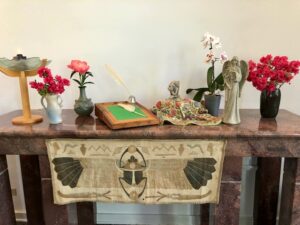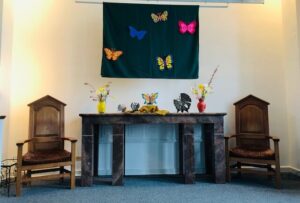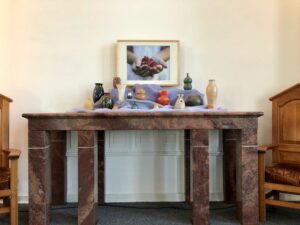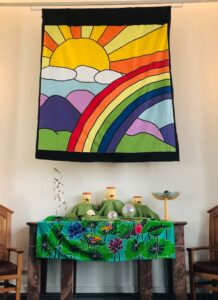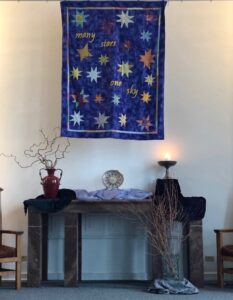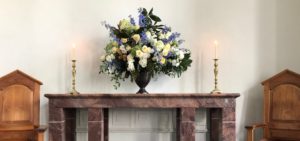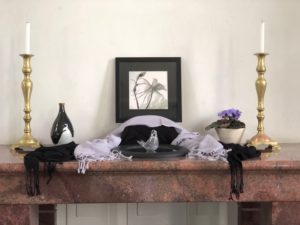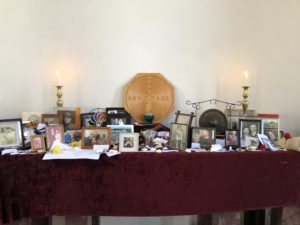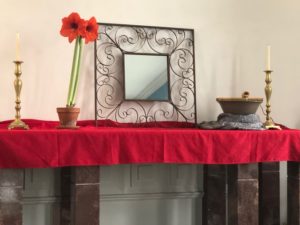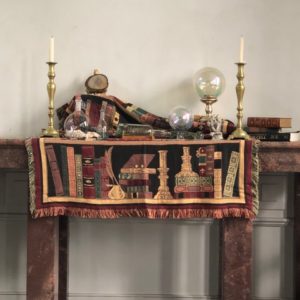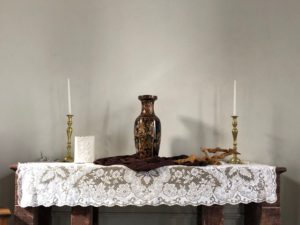In our worship life for the past several years we have participated in a program called “Soul Matters.” Developed at First Unitarian Church in Rochester, NY, Soul Matters provides monthly themes as a way to help focus worship so as to correct the all-too frequent model of jumping around week-to-week with no real connection. This makes it hard to have any experience of moving through a liturgical year, of going on a spiritual journey – as individuals and as a congregation. In the roughly 11 years since its inception, more than 200 UU congregations have signed on to this experiment in communal worship. (That’s roughly 20%, and that’s an astonishing number of UU congregations agreeing to do the same thing!)
This year we’re taking that experiment a bit further. The major lack in the Soul Matters model is that it essentially just creates a higher order of randomness. Why does this theme follow that theme? How do the various months tie together over a year? It is certainly an improvement in terms of fostering a sense of a common spiritual journey over the course of a year.
This year the Worship Staff team of Rev. Alex McGee (Assistant Minister), Scott DeVeaux (Director of Music), Leia Durland-Jones (Director of Faith Development), and I have taken the four seasons of the year and assigned to each one an issue with which we humans have all had to deal as long as we’ve been sentient beings. In the Fall we’ll be exploring identity; In the Winter we’ll take up the hard stuff of life; the Spring will see us looking at questions of purpose; and, finally, in the summer we’ll consider what living a good (and “appropriate”) life looks like. Within this framework we’ll still have monthly themes, but they’ll be tied together to the seasonal focus, and the seasons move through a pattern of exploration – who we are, can lead to looking at why (and how) we have to deal with hard things, which can lead us to consider our purpose, which informs our answer to the question of how to live the life we’re meant to live. (And you’ll notice that this can be a cycle, with our attempts to live an authentic life bringing us back to look at our identity/ies at a new level.)
Two summers ago Scott returned from the annual conference of the Unitarian Universalist Musicians Network (UUMN) on fire for a new way of identifying worship themes and creating services. Rather than using the rational side of the brain to come up with words and concepts as a starting point, this model begins with, and centers around a visual metaphor. This month, for instance, we’ll be looking at the dancing with the image of a bowl. You may note that our altar will reflect the theme, as will images on the Orders of Service, the music we experience, and the words that are spoken.
All of these changes are to help facilitate what Marcia McFee, the creator of the model that so excited Scott, calls, “double M worship” — worship that is both moving and memorable. This will be new for all of us, and while much of the experience in the sanctuary on Sunday mornings will not seem all that different from what you’ve been used to, Rev. Alex, Scott, Leia, the Worship Weavers, and I hope that there’ll be an added depth that will, over time, show up in greater spiritual for each of us, and for us all as a community.
Pax tecum,
RevWik


